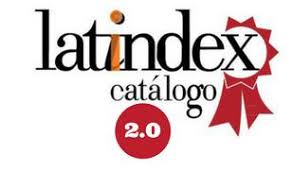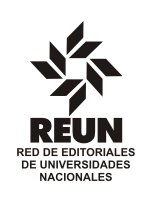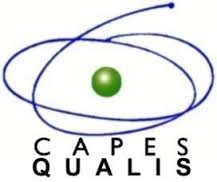¿Por qué varia el desempeño escolar entre estudiantes de baja condición social? Asociaciones entre prácticas, percepciones y logros
Resumen
Palabras clave
Texto completo:
PDFReferencias
Albornoz, F.; Furman, M.; Podestá, M.; Razquin, P. (2015). Diferencias educativas entre escuelas privadas y públicas en Argentina, Desarrollo Económico, 56(218), 3-31.
Bernstein, B. (1971) Class, codes and control. Londres: Routledge.
Bertschy, K.; Cattaneo, A.; Wolter, S. (2008) What Happened to the PISA 2000 Participants Five Years Later? IZA Discussion Paper Series, 3323. Bonn: Institute for the Study of Labor.
Carabaña, J. (2015). La inutilidad de PISA para las escuelas ,
Julio Carabaña. Madrid: La Catarata.
Casassus, J. (2001) Primer estudio internacional comparativo sobre lenguaje, matemática y factores asociados para alumnos de tercer y cuarto grado de la educación básica. Santiago de Chile: Laboratorio Latinoamericano de Evaluación de la Calidad de la Educación.
Cervini, R. (2009). ‘Comparando la inequidad en los logros escolares de la educación primaria y secundaria en Argentina: un estudio multinivel.’ Revista Iberoamericana sobre Calidad, Eficacia y Cambio en Educación. 7(1), 6-21.
Cervini, R. y Del Campo, R. (2012) Nivel de aprendizaje y características del alumno y de la escuela. Censo secundaria ONE 2010-matemática. Dirección Nacional de Información y
Evaluación de la Calidad Educativa. Buenos Aires: Ministerio de Educación.
Downey, D.; Condron, D. (2016). Fifty years since the Coleman Report: Rethinking the relationship between schools and inequality. Sociology of Education 89(3), 207–220
Edmonds, R; Billingsley, A.; Comer, J.; Dyer, J; Hall, W.; Bernard Hill, R.; Mcgehee, N.; Dunbar Reddick, L.; Taylor, H.; Wright, S. (1973) A black response to Christopher Jencks’s inequality and certain other issues. Harvard Educational Review, 43, 76-91.
Ganzeboom, H.; Treinman, D. (2003) Three internationally standardised measures for comparative research on occupational status. En: Hoffmeyer-Zlotnik J.; Wolf C. (org.) Advances in cross-national comparison. Boston: Springer, p. 83-10.
González Rozada, M., Narodowski, M., Gottau, V. & Moschetti, M. (2015). De facto school choice and socioeconomic segregation in secondary schools of Argentina. https://EconPapers.repec.org/RePEc:udt:wpecon:2015_05.
Hattie, J. A. C. (2009). Visible learning: A synthesis of over 800 meta-analyses relating to achievement. London: Routledge.
Jencks, C. (1972) Inequality: a reassessment of the effect of family and schooling in America.
Nueva York: Basic Books.
Krüger, N. (2011) ‘The segmentation of the argentine education system: evidence from PISA
’ Regional and Sectorial Economic Studies. 11(3), 41-64.
Krüger, N. (2019). La segregación por nivel socioeconómico como dimensión de la exclusión educativa: 15 años de evolución en América Latina. Archivos Analíticos de Políticas Educativas27(8), 1-34 http://dx.doi.org/10.14507/epaa.27.3577.
Kyricakides, L.; Creemers, B. (2008) The effects of teacher factors on different outcomes: Two studies testing the validity of the dynamic model. Effective Education. 1(1), 61-85.
Kyriakides, L.; Christoforou, C.; Charalambos Y. (2013) What matters for student learning outcomes: A meta-analysis of studies exploring factors of effective teaching,Teaching and Teacher Education. 36, 143-152.
Mace-Matluck, Betty (1987) The Effective Schools Movement: Its History andContext. An SEDL Monograph. Austin: Southwest Educational Development Lab. Marsh, Herb; Craven, Rhonda (2005) A reciprocal effects model of the causal ordering of selfconcept and achievement: New support for the benefits of enhancing self-concept. Educational
& Child Psychology 25(2), 104-118.
Martín, E. (2009). Currículo y evaluación estandarizada: colaboración o tensión. En E. Martin& E. Martinez Rizo (comps.) Avances y desafíos en la evaluación educativa. Buenos Aires: OEI/
Fundación Santillana, p. 89-98.
Melekoglu, M. A. (2011). Impact of Motivation to Read on Reading Gains for Struggling Readers With and Without Learning Disabilities. Learning Disability Quarterly, 34(4), 248–261. http://www.jstor.org/stable/23053287
Meyer, H., Benavot, A. (2013). PISA, power, and policy: the emergence of global educational governance. Oxford: Symposium Books.
Muller, E.; Mancuso, S.; Vitale, M. Estado del arte de la investigación sobre la Eficacia Escolar en Argentina. En: Murillo, J. (Org.), La investigación sobre eficacia escolar en Iberoamérica.
Revisión internacional del estado del arte. Bogotá: Centro de Investigación y Documentación Educativa, 2003. p. 127- 148.
Murillo, J. (Org.), (2003) La investigación sobre eficacia escolar en Iberoamérica. Revisión internacional del estado del arte. Bogotá: Centro de Investigación y Documentación Educativa.
Murnane RJ. (1981) Interpreting the Evidence on School Effectiveness. Teachers College Record. 83(1), 19-35. doi:10.1177/016146818108300106
Neufeld, Barbara (1983) A Review of Effective Schools Research: The Message for Secondary Schools. Washington: National Commission on Excellence in Education.
Pereyra, M. Kotthoff, H.; Cowen, R. (2013). PISA a examen: cambiando el conocimiento, cambiando las pruebas y cambiando las escuelas. Introducción al monográfico. Profesorado.
Revista de Currículum y Formación de Profesorado, 17(2), 6-14
Purkey, S.; Smith, M. (1982) Effective schools. A review. National Invitational Conference, Research On Teaching: Implications For Practice. Warrenton, VA, February, p. 25-57.
Reimers, F. (2000) ¿Pueden aprender los hijos de los pobres en las escuelas de América Latina? Revista Mexicana de Investigación Educativa 5(9), 11-69.
Reynols, D.; Sammons, P.; De Fraine, B., Van Damme, J. (2014) Educational effectiveness
research (EER): A state-of-the-art review. School Effectiveness and School Improvement.
Londres. 25 (2), 197-230.
Rivas, A. (2015). América Latina después de PISA. Buenos Aires: CIPPEC. https://www.cippec.
org/publicacion/america-latina-despues-de-pisa-lecciones-aprendidas-de-la-educacion-ensiete-paises-2000-2015/
Sammons, P.; Bakkum, L. (2011) Effective schools, equity and teacher efficacy: A review of the literature. Revista de Curriculum y Formacion del Profesorado. 15 (3), 9-26.
Samuels, J.; Paul, T. (2007). Does practice make perfect? independent reading quantity, quality and student achievement. Learning and Instruction, 17 (3), 253-264
Slavin, Robert (1994) Effective Classrooms, Effective Schools: A Research Base for Reform in Latin American Education. En: Puryear, Effrey; Brunner, José (Eds.), Education, Equity And Economic Competitiveness In The Americas: An Inter-American Dialogue Project Volume I:
Key Issues. Washington: Interamer-OEA.
Scheerens, J.; Cramers, B. (1989) Conceptualizing school effectiveness. International Journal of Educational Research. 13 (7), 691-706.
Scheerens, J.; Witziers, B.; Steen, R. (2013) Un meta-análisis de estudios de eficacia escolar. Revista de Educación. 3 (61), 619-645.
Slavin, R. (1994) Effective classrooms, effective schools: A research base for Reform in Latin American education. En: Puryear, J.; Brunner, J. (Orgs.) Education, equity and economic competitiveness in the Américas. An inter-American dialogue project. Washington: OEA, 7-29.
Treviño, E.; Valdes, H.; Castro, M.; Costilla, R.; Pardo, C.; Rivas Donoso, F. (2010) Factores asociados al logro cognitivo de los estudiantes de América Latina. Santiago de Chile: Laboratorio Latinoamericano de Evaluación de la Calidad Educativa.
Weber, G. (1971) Inner-city children can be taught to read: Four successful schools. Washington: Council for Basic Education.
Willis, P. (1988). Aprendiendo a trabajar. Cómo los chicos de la clase obrera consiguen trabajos de clase obrera. Buenos Aires: Akal.

Este obra está bajo una licencia de Creative Commons Reconocimiento-NoComercial-CompartirIgual 4.0 Internacional.
 |
ISSN 1853-1318 (impresa) - ISSN 1853-1326 (en línea)
|
| Indizada en: | |
 | CCPP Catálogo Colectivo de Publicaciones Periódicas http://ccpp.caicyt.gov.ar/cgi-bin/koha/opac-detail.pl?biblionumber=149451 |
 | Núcleo Básico de Revistas Científicas Argentinas, Caicyt http://www.caicyt-conicet.gov.ar/sitio/revista-de-educacion/ |
 | Google académico (en proceso de actualización) |
 | Latindex https://www.latindex.org/latindex/ficha/14316 |
 | Redib http://redib.org/Record/oai_revista1003-revista-de-educaci%C3%B3n |
 | REUN https://www.reun.com.ar/ |
 | DOAJ Link/ |
 | Capes Qualis Link/ |
 | Journals for Free Link/ |
 | Latinoamericana (Asociación de Revistas Académicas de Humanidades y Ciencias Sociales) Link/ |
 | ERIH PLUS (European Reference Index for the Humanities and Social Sciences) Link/ |
 | ROAD (Directory of Open Acces Scholarly Resources) Link/ |
 | Directory of Research Journals Indexing (DRJI) Link/ |
 | LatinRev Link/ |
| Esta revista utiliza el Identificador Persistente | |
.png) |

